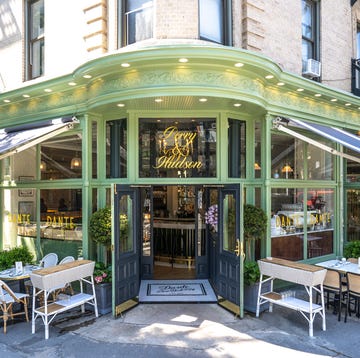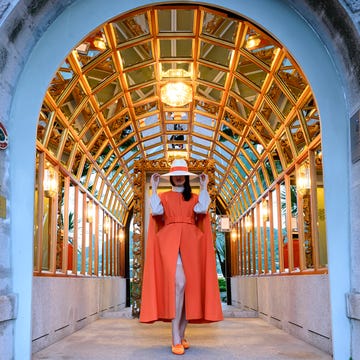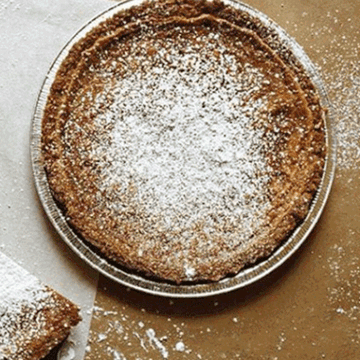Andy Baraghani is one of those food world figures whom home cooks trust wholeheartedly. His authority as a chef and an author isn't based solely on where he's worked previously or how many Instagram followers he has (though his Instagram is immaculate), but on the authentic connections he's made with his fans and followers.
Baraghani started off as a young cook in California kitchens, doing a tour through food media and a brief stint in fashion before ending up where he is now: a New York Times best-selling author. His recently released debut cookbook, The Cook You Want to Be: Everyday Recipes to Impress, is a gorgeous curation of seasonal-forward recipes for the curious home cook featuring dishes like Coconut Creamed Corn, Scallops with Grapefruit Brown Butter, and a leveled-up Cacio e Pepe with Chickpeas (shared below).
According to Baraghani, his "deep and innate" love for food is what ultimately shaped The Cook You Want to Be. "I wasn't necessarily 100 percent sure I was going to be a cook or a writer or an author, ever," he tells BAZAAR.com. "Those were ideas that I toyed with and loved, but it was more of a core, foundational love for food that always existed."
More From Harper's BAZAAR

Ahead, the chef shares his thoughts on food trends, the ever-changing culinary landscape, and why his experience as a first-generation Iranian American will always be at the core of everything he does.
Tell me what inspired the new book's title, The Cook You Want to Be.
Titles are always a tricky thing. The book was originally titled The Cook I Want to Be, and it traced the lessons that I've learned throughout my life as a cook, being first-generation Iranian American, working restaurants around the country, working editorial and traveling. Once I actually started writing the manuscript, probably about halfway, I had this moment where I thought, This is definitely a very personal cookbook. But I wanted it to feel like an invitation to the reader and to the home cook. It isn't just about me; it's really about empowering the home cook and having them evolve and sustain this kind of level of curiosity, both in and out of the kitchen. So eventually, I swapped the "I" for "You," and I think it made a big difference.
In the book's introduction, you mention that you initially tried to avoid cooking as a career, which I loved because I was the same way when it came to writing. What would you consider the defining moment when you realized you had to give in to what ultimately was going to become your gift and your talent?
I started working at restaurants when I was around 16 in California. By the time I was 21, I had worked at four good restaurants. I had worked in editorial. I had an experience working at a food magazine called Saveur. But then, I decided to take a pause, and I went into fashion. I was working for a stylist who I really admired, who is actually very, very, very, very well known these days. Okay, it was Mel Ottenberg! This was right when he got Rihanna. So it was a very special time. I loved that whole experience.
But then, there was a moment where I realized that my love of food is not something that started when I was in my 20s or in my teens, like maybe fashion or design. This was something that was kind of uncontrollable, insatiable—a deep innate love that was going to exist whether I pursued a career in it or not. That's when I switched from restaurants to media. It really put me onto a specific path that I didn't necessarily plan on. The one thing that I've always been very sure of was my love for food and cooking.
Food and fashion are similar in the sense that both industries can be very trend based. Is there a food or drink trend maybe that you're loving right now? Or maybe one you find a little overrated?
When it comes to interior design or fashion, I can understand and appreciate trends. I think with food, probably because I'm so embedded in it, I have a slight aversion [laughs].
I wanted my cookbook to evoke a timeless quality and maintain this theme of staying curious and evolving. We are in a kind of renaissance when it comes to cookbooks that are more personal, or that focus on a highly regional cuisine. My book aside, it's been amazing to see so many great authors take such a unique approach.
I'm curious—not to put you on the spot, but what's a food trend you think that is happening at the moment?
I definitely feel that no one was drinking this many martinis three years ago.
Strong cocktails have come back with a vengeance. I think there's a desire for the familiar, and classic cocktails like martinis and Negronis are things that we're wanting that are also delicious. We know what they taste like, and we know they'll get the job done.
Obviously, you're someone who cooks professionally every day for a living. Having that be a part of your life 24/7, how do you stay inspired in the kitchen?
My big way of being inspired is through my travels. When we were deep in the pandemic, it was a really hard time for me. It was a hard time for all of us. When you identify as a creative, you often get inspired from simply being outside. It's very hard for me to just sit with my thoughts and be inspired to create, whether that is to write or to cook. I need to be inspired by people, places, and things.
I try to travel as much as I can. I was seeing people go to Italy over and over this summer, and I'm guilty—I went to Italy too! But I also thought, How do I get to Japan? So I booked a flight to Japan. The city of New York, of course, too, I still have a deep, deep love for. I don't work in restaurants anymore, but I love going to restaurants, and I get a lot of inspiration there.
An important aspect of the book is that it's very approachable. There are a lot of people who are simply terrified of cooking. For those who aren't trying to be a food influencer or show off a dinner party on Instagram, but who really just want to learn to make better food for themselves, where do you suggest they start?
Sometimes a recipe just works, and it's delicious. That was the base for all the recipes in the book. But I wanted to go one step further and help people discover a specific ingredient that they may not have been aware of, or try a new technique, or to learn about the cultural context of a dish. I wanted to make sure there were these kind of lessons sprinkled throughout the book.
If you're starting to cook, because we're in the fall months, a really good place to start is actually the soup chapter. They're very simple soups that are very satisfying and filling, and are complete meals.
In the book, you write about how your culture has shaped some of the favorite meals and recipes. You've been speaking out on social media about the current movement happening right now in Iran. In times like these, how does food provide comfort for you?
Thank you for asking this. I will say there isn't a constant with this answer. Sometimes eating certain dishes from my childhood does provide me a great deal of calm. At this very moment in time, I know that I'm connected with a lot of Iranians, both in New York and California. I have family in Iran: my grandmother, two uncles, aunts, like, six cousins. But if cooking brings any sort of respite or calm, it's for a very brief moment. I have never been so glued to [the news], just wanting to know as much as possible what's happening in Iran and in the world than right now.
I'm first generation. I grew up speaking the language. And a big part of my job and who I am, as someone who has accidentally become a bit of a—for lack of a better word—public figure in the food space, is to shine a positive light on Iranian culture, which has not really been placed in a positive light, especially here in the U.S. I'm very aware of the kind of position that I'm in in that sense, and I've always been very comfortable being vocal about where I stand.
Cacio e Pepe with Chickpeas and Caramelized Lemon
There are many recipes for pasta e ceci (aka pasta with chickpeas). The majority that I’ve encountered are brothy, almost souplike. This recipe emphasizes both the chickpeas and the pasta but is equally comforting and a lot creamier than the usual versions. Much of the magic of this dish lies in crushing the chickpeas, so they release their starches and transform the pasta water into a creamy sauce. Some of the chickpeas retain their shape, whereas others turn to delicious mush, and the caramelized lemon lends some chewy tang and brings the pasta back to life post-boiling. It’s incredibly satisfying. If I still need to convince you to make this, know that it was the first meal that I made for my boyfriend, and he has been attached to me ever since.
SERVES 4 (PLUS, MAYBE, SOME LEFTOVERS, THOUGH I DOUBT IT)
Kosher salt
¼ cup extra-virgin olive oil
1 small Meyer or regular lemon, thinly sliced, seeds picked out
1 (15-ounce) can chickpeas, drained and rinsed
1large shallot, finely chopped
1 rosemary sprig, or 4 thyme sprigs
Freshly ground pepper
1 pound tubular pasta (such as calamarata, paccheri, or rigatoni)
¼ cup unsalted butter, cut into small pieces
½ cup finely grated Parmesan cheese, plus more for serving
Bring a large pot of water to a boil, then throw in a handful of salt (about ¼ cup). While the water is doing its thing, set a separate large pot or Dutch oven over medium heat and pour in the olive oil. Add the lemon and cook, using tongs to flip the slices until they begin to lightly brown and shrivel up, 6 to 8 minutes.
Using the tongs, transfer the caramelized lemon slices to a bowl, leaving the oil in the pot. Dump the chickpeas into the oil and let them get a little crisp and golden, stirring occasionally, 5 to 7 minutes.
Add the shallot and crush the rosemary to release its oil and drop it into the pot. Season with salt and lots and lots of pepper and give everything a stir. Cook until the shallot is beginning to soften, 3 to 5 minutes.
Meanwhile, add the pasta to the boiling water and cook until almost al dente, about 2 minutes less than what the package suggests (it’ll finish cooking in the sauce). Just before the pasta is al dente, scoop out 2 cups pasta water. Add 1½ cups pasta water to the pot with the chickpeas and bring to a simmer, still over medium heat. (This may seem like a lot of liquid, but it will thicken once the remaining ingredients are added.)
One piece at a time, stir in the butter until the pasta water and butter have become one. Using a slotted spoon, transfer the pasta to the sauce. Cook, stirring often and sprinkling in the Parmesan a little at a time. (Don’t add the cheese all at once, as that can make the sauce split and turn grainy.) Keep stirring until the cheese is melted and the sauce is creamy and clings to the pasta, about 3 minutes. If the sauce looks too thick, add more pasta water, 1 to 2 tablespoons at a time to thin (but know that saucier is ideal because it will thicken as it cools). Turn off the heat and fold in the caramelized lemon. Sprinkle with an almost ridiculous amount of pepper and more Parmesan before serving.
Bianca Betancourt is the culture editor at HarpersBAZAAR.com, where she covers all things film, TV, music, and more. When she's not writing, she loves impulsively baking a batch of cookies, re-listening to the same early-2000s pop playlist, and stalking Mariah Carey's Twitter feed.
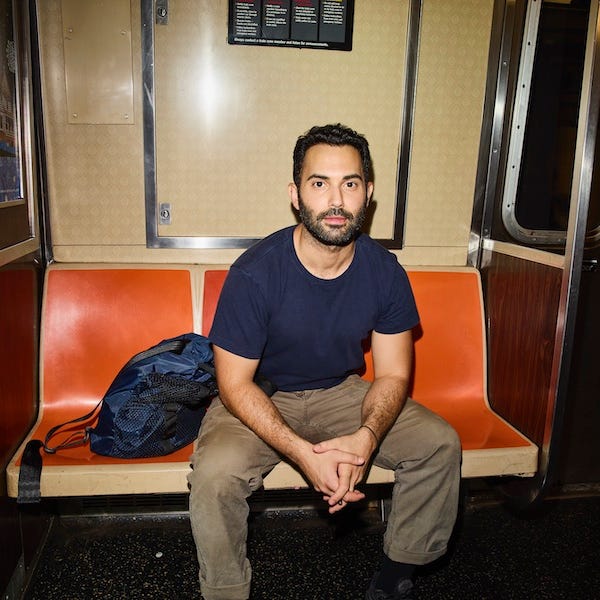
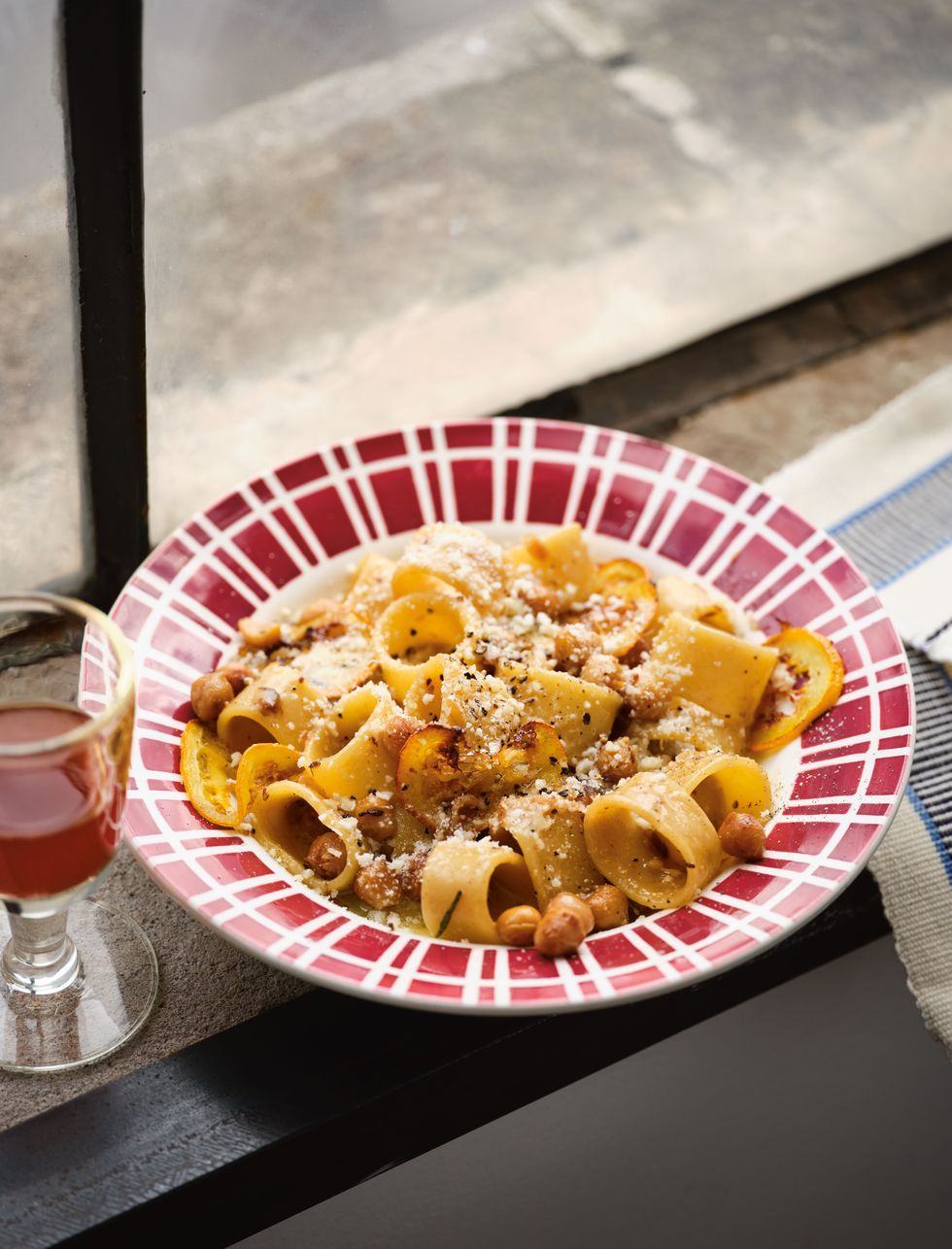
![The Cook You Want to Be: Everyday Recipes to Impress [A Cookbook] The Cook You Want to Be: Everyday Recipes to Impress [A Cookbook]](https://hips.hearstapps.com/vader-prod.s3.amazonaws.com/1639151433-417lPfCUCLL._SL500_.jpg?crop=1xw:1xh;center,top&resize=980:*)

